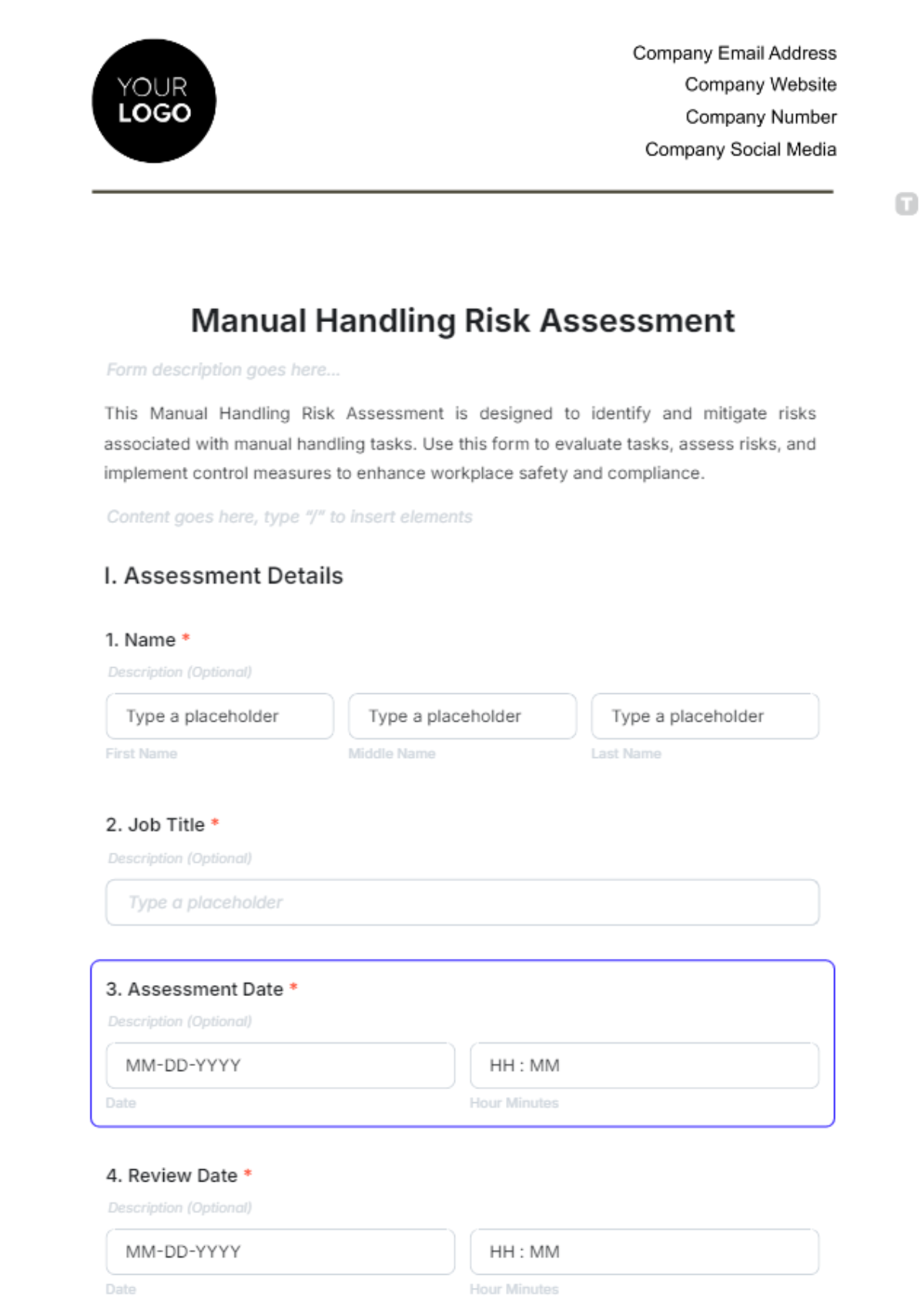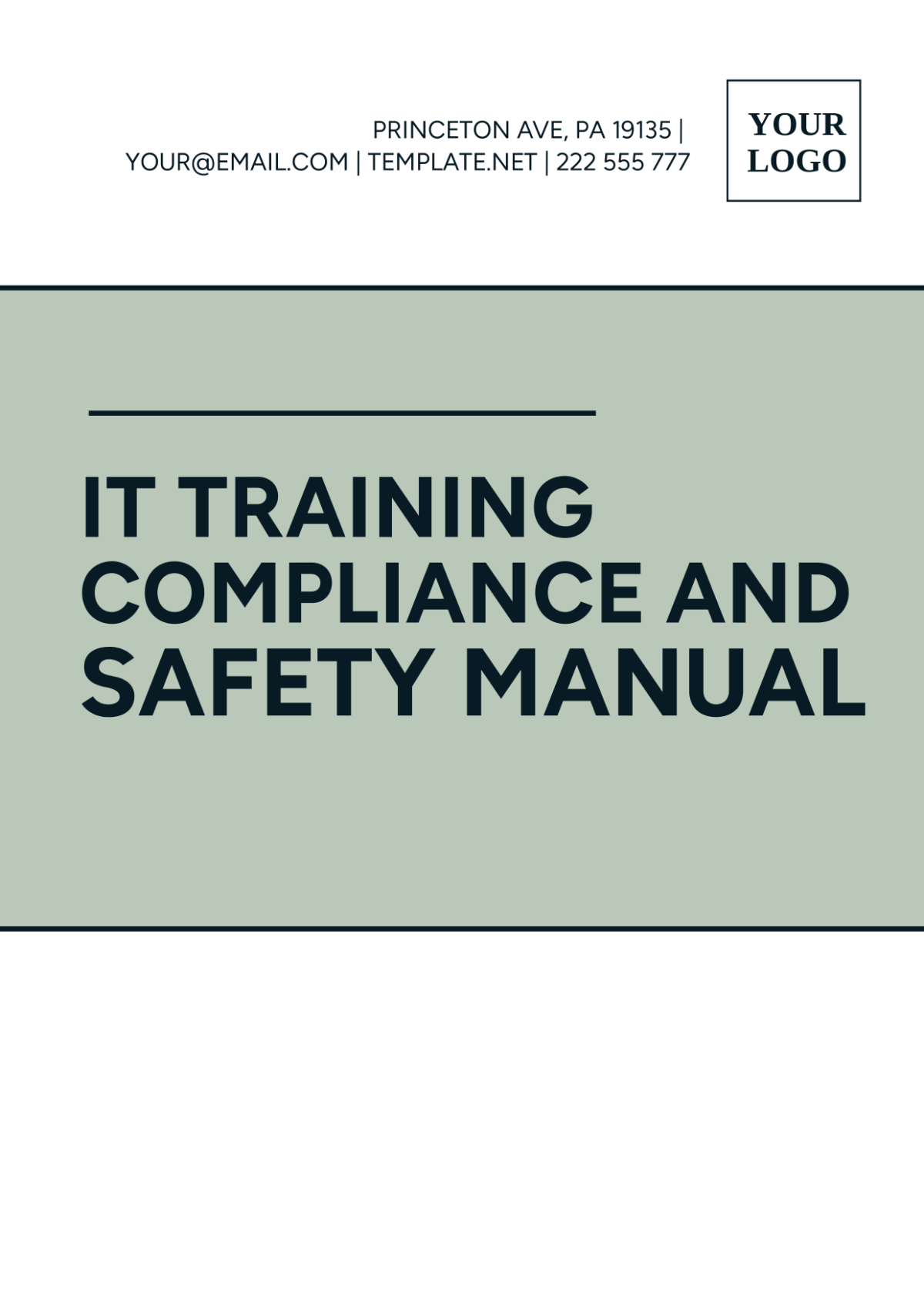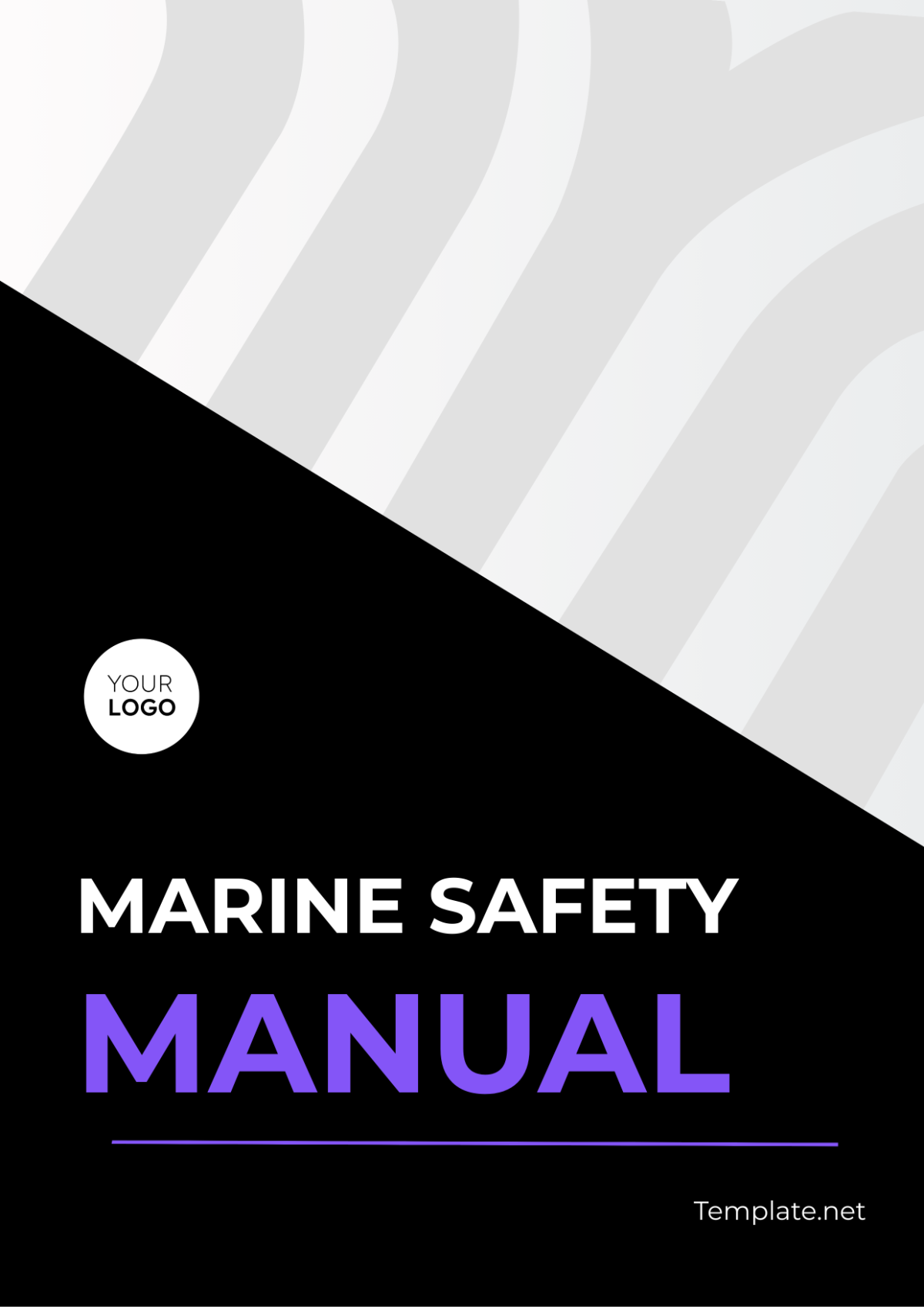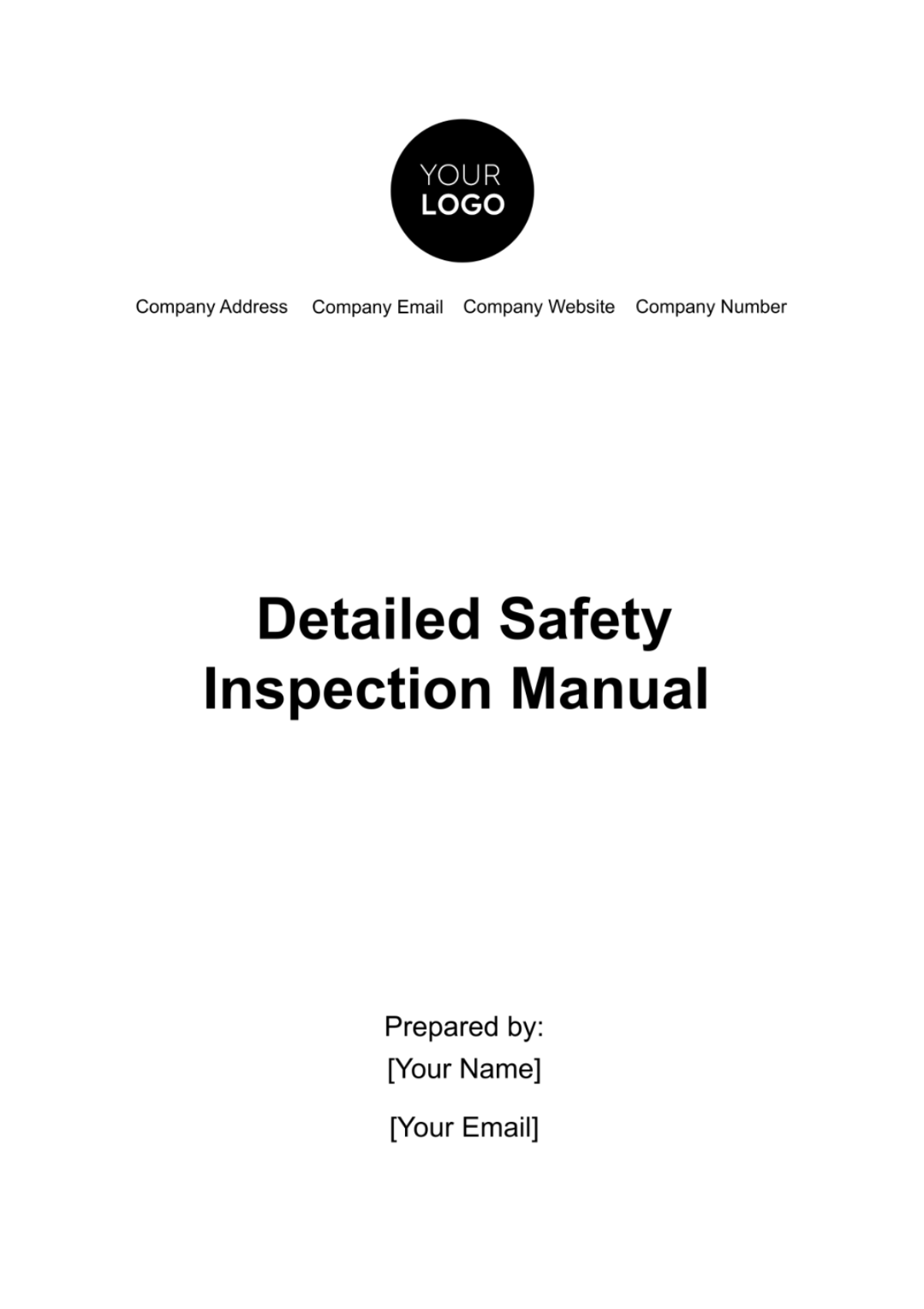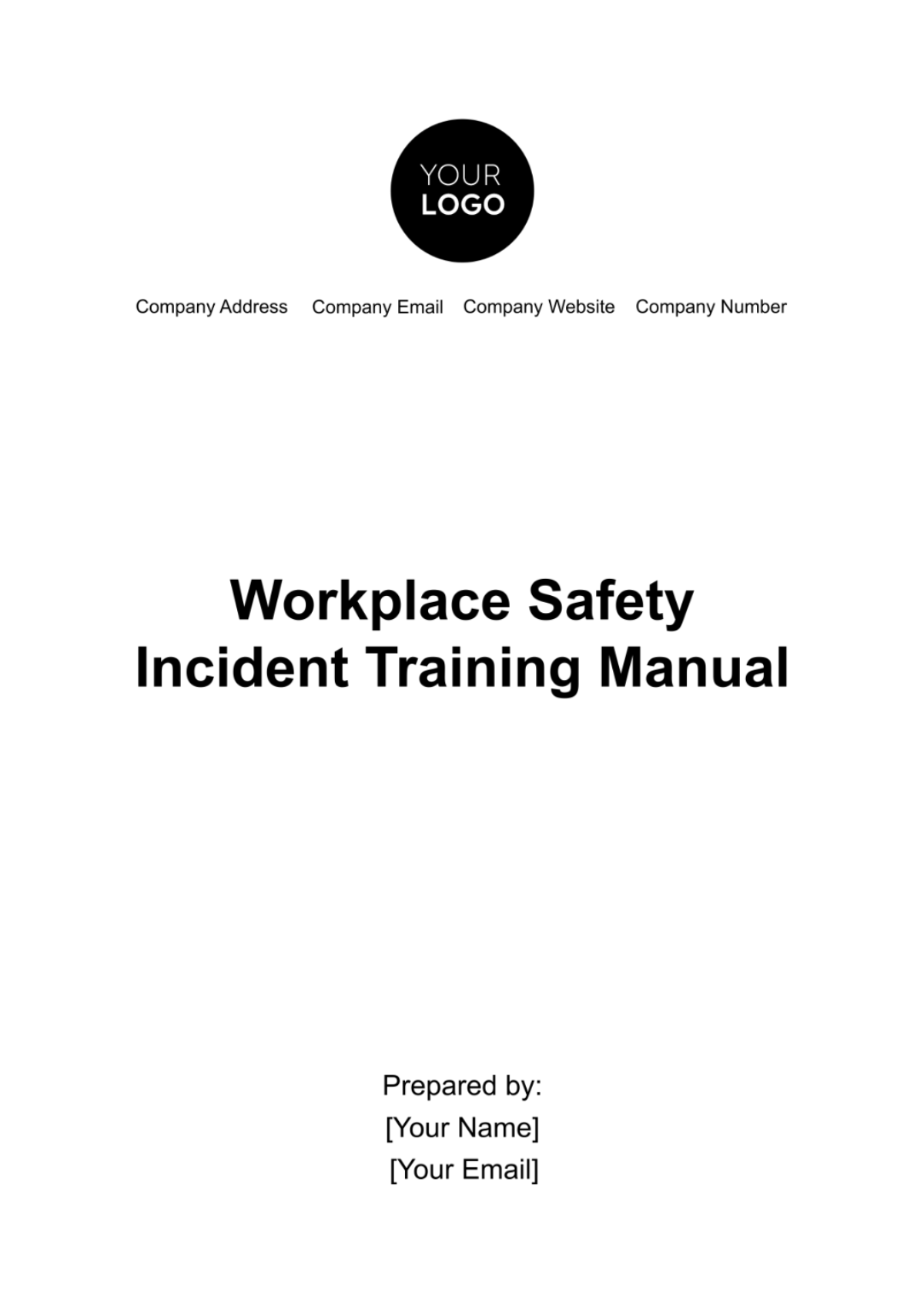Security Manual
I. Introduction
The [YOUR COMPANY NAME] Security Manual serves as a comprehensive guide to ensure the safety and security of all personnel and assets within the organization. Security is a top priority, and this manual outlines the protocols and procedures to mitigate risks, respond to incidents, and maintain a secure environment. By adhering to the guidelines outlined in this manual, [YOUR COMPANY NAME] aims to create a safe and secure workplace for everyone.
II. Security Policies and Procedures
A. Access Control
Access to [YOUR COMPANY NAME] facilities and systems is strictly controlled to prevent unauthorized entry and protect sensitive information. Access control measures include:
Issuance of security badges to authorized personnel only.
Implementation of biometric authentication for high-security areas.
Regular audits and reviews of access permissions to ensure compliance.
B. Information Security
Protecting [YOUR COMPANY NAME]'s data and information assets is essential for maintaining confidentiality, integrity, and availability. Information security measures include:
Encryption of sensitive data both in transit and at rest.
Regular backups of critical systems and data to prevent loss.
Implementation of strong password policies and multi-factor authentication.
III. Emergency Response
A. Emergency Preparedness
[YOUR COMPANY NAME] is committed to ensuring the safety and well-being of its employees in the event of emergencies. Emergency preparedness measures include:
Conducting regular drills and training sessions to familiarize employees with emergency procedures.
Maintaining emergency supplies such as first aid kits, fire extinguishers, and emergency evacuation routes.
B. Incident Response
In the event of a security incident or breach, [YOUR COMPANY NAME] has established protocols to respond promptly and effectively. Incident response procedures include:
Activation of the incident response team to assess the situation and coordinate a response.
Notification of appropriate stakeholders, including management, IT, and legal teams.
Investigation and analysis of the incident to determine the cause and prevent future occurrences.
IV. Compliance and Auditing
A. Regulatory Compliance
[YOUR COMPANY NAME] is committed to complying with all applicable laws, regulations, and industry standards related to security. Compliance measures include:
Regular audits and assessments to ensure adherence to regulatory requirements.
Collaboration with legal and compliance teams to stay updated on changes in regulations.
B. Security Audits
Regular security audits are conducted to evaluate the effectiveness of security controls and identify areas for improvement. Audit procedures include:
Review of access logs, security configurations, and incident reports.
Implementation of corrective actions to address any identified vulnerabilities or deficiencies.
V. Security Awareness Training
A. Employee Training
All employees of [YOUR COMPANY NAME] receive comprehensive security awareness training to educate them about security risks and best practices. Training topics include:
Recognizing phishing attempts and other social engineering tactics.
Secure handling of sensitive information and data.
Reporting security incidents and concerns to the appropriate channels.
B. Ongoing Education
Security awareness training is an ongoing process at [YOUR COMPANY NAME], with regular updates and refresher courses provided to employees. Ongoing education initiatives include:
Distribution of security newsletters and bulletins to keep employees informed about current threats and trends.
Participation in industry conferences and seminars to stay updated on best practices and emerging technologies.
VI. Physical Security Measures
A. Premises Security
Physical security measures are in place to safeguard [YOUR COMPANY NAME]'s premises and assets. These measures include:
Installation of security cameras and alarms to monitor and deter unauthorized access.
Access control systems to restrict entry to authorized personnel only.
Regular patrols and inspections to ensure the integrity of physical barriers and locks.
B. Asset Protection
Assets such as equipment, inventory, and intellectual property are protected through various security measures, including:
Asset tagging and tracking to monitor the location and status of valuable assets.
Implementation of secure storage facilities and procedures to prevent theft or damage.
Security awareness training for employees to promote responsible handling and protection of assets.
VII. Network Security
A. Firewall Configuration
The network infrastructure of [YOUR COMPANY NAME] is protected by robust firewall configurations. Firewall-related measures include:
Regular review and updates of firewall rules to align with security policies and industry best practices.
Implementation of intrusion detection and prevention systems to monitor and block suspicious network traffic.
Segmentation of network zones to limit the spread of malicious activities and enhance network security.
B. Secure Remote Access
Remote access to [YOUR COMPANY NAME]'s network is granted only through secure and authorized channels. Secure remote access measures include:
Implementation of virtual private networks (VPNs) with strong encryption protocols to ensure data confidentiality.
Use of multi-factor authentication for remote users to verify their identity before accessing network resources.
Regular monitoring and logging of remote access activities to detect and respond to any unauthorized access attempts.
VIII. Incident Response and Management
A. Incident Identification
Prompt identification of security incidents is crucial for mitigating potential damages. Incident identification measures include:
Implementation of security monitoring tools and techniques to detect anomalous activities and potential security breaches.
Training for employees to recognize signs of security incidents and report them to the appropriate authorities promptly.
Establishment of incident response procedures and protocols to facilitate swift action upon incident detection.
B. Incident Response Plan
[YOUR COMPANY NAME] has developed a comprehensive incident response plan to address various security incidents effectively. Incident response plan components include:
Clearly defined roles and responsibilities for incident response team members to ensure coordinated and efficient response efforts.
Communication protocols and escalation procedures to notify relevant stakeholders and decision-makers during an incident.
Incident containment and eradication strategies to limit the scope and impact of security breaches and restore normal operations.
IX. Documentation and Review
A. Documentation Standards Thorough documentation of security policies, procedures, and incidents is essential for maintaining accountability and facilitating continuous improvement. Documentation standards include:
Creation and maintenance of detailed records for all security-related activities, including policy changes, incident responses, and audits.
Regular review and updates of documentation to reflect changes in technology, regulations, and organizational requirements.
Secure storage and backup of documentation to ensure accessibility and integrity in the event of a security incident or audit.
B. Continuous Improvement
[YOUR COMPANY NAME] is committed to continuously improving its security posture through proactive measures and lessons learned from past experiences. Continuous improvement initiatives include:
Regular review and analysis of security incidents, audit findings, and industry trends to identify areas for enhancement.
Implementation of corrective actions and preventive measures to address vulnerabilities and strengthen security controls.
Collaboration with external security experts and industry peers to exchange knowledge and best practices for enhancing security resilience.
X. Conclusion
In conclusion, the [YOUR COMPANY NAME] Security Manual provides a comprehensive framework for establishing and maintaining a secure environment. By implementing the policies, procedures, and measures outlined in this manual, [YOUR COMPANY NAME] can effectively mitigate security risks, respond to incidents, and protect its personnel and assets. Continuous vigilance, education, and collaboration are key to maintaining a strong security posture in an ever-evolving threat landscape.




